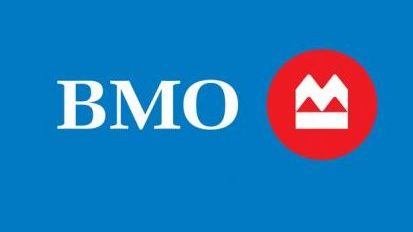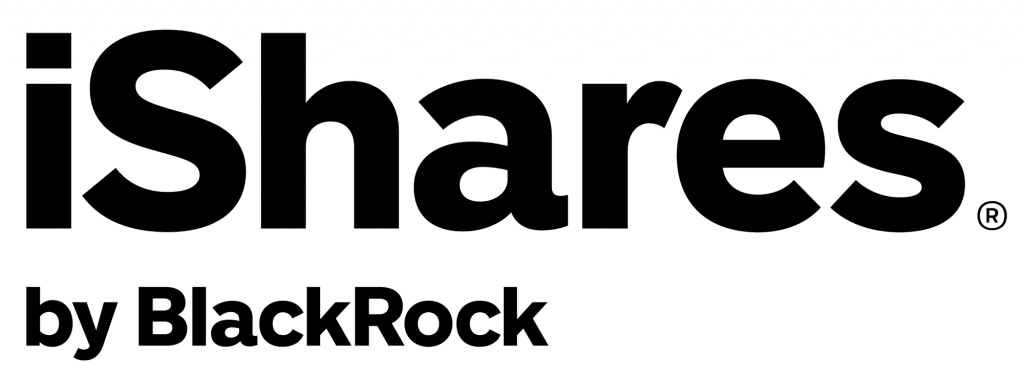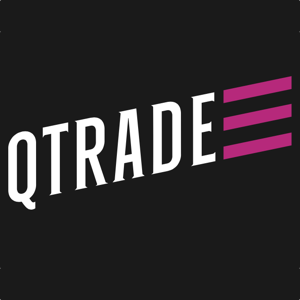Are you looking to invest in one or more ETFs but want to make sure that you’re not giving up too much of your return toward fees?
As of 2020, the average expense ratio for an exchange-traded fund (or ETF) that tracks an index was 0.18%.
While higher management fees can indicate a closer level of involvement between a portfolio management team and the underlying fund, they will certainly eat away at your net returns over time. This becomes a bigger problem over long time horizons during which the impact will compound.
I will go over the cheapest ETFs in Canada below and outline several fund categories as well as low-cost ETF options that belong to each one.
How to Think of Various ETFs and Fees
An exchange-traded fund, or ETF, refers to the shell of an investment fund. With thousands of ETFs to choose from across a wide range of asset classes, ETFs can be extremely different.
Lower-risk ETFs tend to be found in the fixed-income asset class while higher-risk ETFs tend to be found in the equity asset class. These various ETFs are also usually offered at different fees.
When determining whether an ETF is cheap, you can look at its management expense ratio as an absolute number. Another important comparison can be drawn among similar ETFs of the same asset class.
A cheap ETF usually means that its fees are low relative to other similar ETFs within the same asset class.
Another element to consider is whether an ETF is passively or actively managed. Passive ETFs that track an index are usually offered at much lower management expense ratios than actively-managed funds.
8 Cheapest ETFs in Canada
Canadian Equity ETFs
1. TD Canadian Equity Index ETF

- Ticker: TTP.TO
- Inception Date: March 22, 2016
- Assets under Management: $1.25 Billion
- Management Expense Ratio: 0.05%
- Management Style: Passive
- Yield: 3.51%
- Risk Rating: Medium
- Stock Price: $23.51
- YTD Return: 0.56%
TD offers an extremely cost-competitive suite of index ETFs here in Canada. The TTP ETF passively follows the Solactive Canada Broad Market Index and offers investors some of the most inexpensive exposure to Canadian stocks in the country.
The fund has a long performance track record and is very large in terms of assets under management. With a management expense ratio of 0.05%, it is cost-competitive across other Canadian equity ETFs as well as in absolute terms.
If you are looking for a cheap Canadian equity ETF, TTP is an excellent choice to consider.
2. Vanguard FTSE Canada All Cap Index ETF

- Ticker: VCN.TO
- Inception Date: August 2, 2013
- Assets under Management: $5.2 Billion
- Management Expense Ratio: 0.05%
- Management Style: Passive
- Yield: 3.02%
- Risk Rating: Medium
- Stock Price: $41.945
- YTD Return: 0.54%
Vanguard is a well-known investment manager with a reputation for low-cost funds and ETFs. In Canada, Vanguard offers VCN, a low-cost Canadian equity index ETF designed to track the Canadian stock market.
VCN tracks the FTSE Canada All Cap Domestic Index. The ETF has a long performance track record and is massive in terms of assets under management. Vanguard offers the ETF at a management expense ratio of 0.05%, which is extremely low and tied with TD’s TTP fund.
If you are looking for broad Canadian stock exposure, Vanguard’s VCN ETF is another excellent, low-cost option to think of.
US Equity ETFs
3. TD US Equity Index ETF

- Ticker: TPU.TO
- Inception Date: March 22, 2016
- Assets under Management: $1.5 Billion
- Management Expense Ratio: 0.07%
- Management Style: Passive
- Yield: 1.28%
- Risk Rating: Medium
- Stock Price: $38
- YTD Return: 3.19%
As part of TD’s Canadian low-cost ETF suite, TPU is another low-cost ETF to consider if you are looking to invest in US stocks. The passive ETF tracks the Solactive US Large Cap CAD Index.
With the same inception date as TTP, TPU has a long performance track record and is a very large fund by assets under management.
Since the ETF invests in US stocks and is not currency-hedged, fluctuations between the US and Canadian dollar will impact your total investment return over time.
Being offered at a management expense ratio of 0.07%, TPU is one of the lowest-cost ETFs available in Canada for getting diversified exposure to US companies.
4. Vanguard S&P 500 Index ETF

- Ticker: VFV.TO
- Inception Date: November 2, 2012
- Assets under Management: $7.2 Billion
- Management Expense Ratio: 0.09%
- Management Style: Passive
- Yield: 1.25%
- Risk Rating: Medium
- Stock Price: $119.29
- YTD Return: 3.09%
Vanguard also offers a very low-cost ETF that offers Canadians exposure to the S&P 500 Index, an index of the largest 500 stocks in the US by market capitalization. Since the ETF passively tracks a US index, you will be exposed to currency fluctuations between the Canadian and US dollars.
VFV has a long performance track record and is a massive fund in terms of assets under management. Although the ETF is offered at a management expense ratio of 0.09% which is marginally higher than TPU’s, it is still a very inexpensive ETF for getting US stock exposure.
If you are looking to invest in large-cap US stocks in a cost-efficient manner, VFV is a great ETF to consider adding to your investment portfolio.
Canadian Bond ETFs
5. Vanguard Canadian Short-Term Bond Index ETF

- Ticker: VSB.TO
- Inception Date: November 30, 2011
- Assets under Management: $7.2 Billion
- Management Expense Ratio: 0.09%
- Management Style: Passive
- Yield: 2.32%
- Risk Rating: Medium
- Stock Price: $22.49
- YTD Return: -0.16%
Continuing its dominance in the low-cost ETF space, Vanguard also has multiple low-cost, fixed-income ETFs available to purchase on its Canadian shelf. Before investing in a bond ETF, keep in mind that bond features are very different across fixed-income categories.
The VSB ETF invests in a basket of short-term bonds (maturities of one to five years) in the Canadian marketplace. It passively tracks the Bloomberg Global Aggregate Canadian Government/Credit 1–5 year Float Adjusted Bond Index.
The ETF has a long performance track record and is very large by assets under management. Vanguard offers VSB at a low management expense ratio of only 0.09%, which is very inexpensive relative to other bond ETFs.
If you are looking for a short-term Canadian bond ETF, VSB is an excellent option.
6. BMO Government Bond Index ETF

- Ticker: ZGB.TO
- Inception Date: March 2, 2018
- Assets under Management: $529 Million
- Management Expense Ratio: 0.17%
- Management Style: Passive
- Yield: 2.75%
- Risk Rating: Medium
- Stock Price: $44.15
- YTD Return: -1.63%
If you are looking for more defensive government bonds, BMO offers a low-cost ETF under the ticker ZGB here in Canada. These bonds have a minimum maturity of one year as well as a minimum size of $100 million.
ZGB is a passively-managed ETF that follows the performance of the FTSE Canada All Government Bond Index.
The ETF has a medium-length performance track record and is a large fund in terms of assets under management.
Coming in at a management expense ratio of 0.17%, ZGB is relatively inexpensive when compared to other government bond funds and ETFs. On an absolute basis, the fund charges investors a higher fee than most funds on my list.
If you are looking for Canadian government bond exposure through a low-cost ETF, be sure to consider ZGB as an option.
Canadian Dividend ETFs

- Ticker: XDIV.TO
- Inception Date: June 7, 2017
- Assets under Management: $788 million
- Management Expense Ratio: 0.11%
- Management Style: Passive
- Yield: 3.95%
- Risk Rating: Medium
- Stock Price: $25.03
- YTD Return: 0.66%
If you value income and are looking to invest in companies that offer attractive dividends, XDIV offered by Blackrock under its Canadian iShares shelf is a great option to consider. The fund invests in roughly 20 quality Canadian dividend-paying stocks.
XDIV is a passive ETF that aims to track the performance of the MSCI Canada High Dividend Yield 10% Security Capped Index.
The ETF has a short performance track record and has a substantial amount of assets under management.
In terms of fees, XDIV is one of the most inexpensive funds you can buy in Canada if you are looking to invest in dividend stocks.
For investors looking for dividend stock exposure here in Canada, XDIV remains an excellent option to consider for your portfolio.
8. Vanguard FTSE Canadian High Dividend Yield Index ETF

- Ticker: VDY.TO
- Inception Date: November 2, 2012
- Assets under Management: $2 billion
- Management Expense Ratio: 0.22%
- Management Style: Passive
- Yield: 4.35%
- Risk Rating: Medium
- Stock Price: $41.04
- YTD Return: -0.34%
While XDIV focuses more on quality dividend stocks, Vanguard’s VDY ETF focuses on high-dividend Canadian stocks. VDY invests in roughly 50 different underlying holdings.
In terms of structure, the VDY ETF is again passively managed, following the FTSE Canada High Dividend Yield Index.
The ETF has a long performance track record and is massive in terms of assets under management.
When considering fees, VDY is offered at an MER of 0.22%, which is roughly double the cost of XDIV. While the fund is relatively more expensive than XDIV, it is still offered at a low management expense ratio compared to the broader dividend fund universe.
If you are looking for a high-income stream from your investments, Vanguard’s low-cost VDY ETF is a great fund to consider adding to your portfolio.
Are Cheap ETFs Worth the Fees?
Inexpensive ETFs may seem like excellent portfolio building blocks since you are typically earning higher after-fee returns. While I generally recommend cheap ETFs, there are some scenarios in which more expensive ETFs can add additional value.
One of the most important things to look out for when considering a cheap ETF is the number of underlying holdings that the fund holds. If an ETF only has several underlying holdings, you may be able to simply invest in the underlying stocks directly and avoid paying any fees altogether.
Cheap ETFs with tens or hundreds of holdings are more difficult to replicate directly and can save you a lot of time by offering you a one-ticket solution for buying all of the underlying investments.
Passive, index ETFs (which are usually the cheapest ETFs) also lack any professional oversight from a portfolio management team. These funds typically follow an index or a basket of securities and do not deviate from this objective.
While they can lead to spectacular long-term returns, cheap and passive ETFs can suffer in the short term if there are any significant market sell-offs. Actively managed ETFs (which are substantially more expensive) benefit from having a portfolio management team that can tactically adjust a fund in order to avoid large drops.
Overall, I strongly advocate for low-cost ETF solutions since they can save you a ton in fees, especially over long or very long investment time horizons.
How to Buy the Cheapest ETFs in Canada
The cheapest way to buy ETFs is from discount brokers. My top choices in Canada are:

- 105 commission-free ETFs to buy and sell
- Excellent customer service
- Top-notch market research tools
- Easy-to-use and stable platform

- Stock and ETF buys and sells have $0 trading fees
- Desktop and mobile trading
- Reputable fintech company
- Fractional shares available
To learn more, check out my full breakdown of the best trading platforms in Canada.
Conclusion
For most investors that have a long investment time horizon, cheap ETFs can be an excellent way to save on fees. Even minor savings of several basis points can compound to large amounts over periods of a few or several decades.
Remember that a fund’s management expense ratio will depend on the complexity of the fund and the specific asset class that the fund tracks. It is difficult to compare ETFs that track different asset classes because it is not an apples-to-apples comparison.
Beyond the cheapest ETFs in Canada, be sure to take a look at my more comprehensive list of the best ETFs in Canada.






